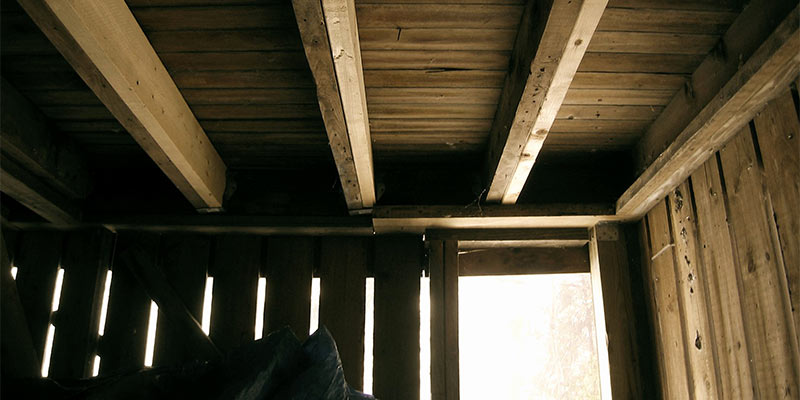
Crawl spaces are areas beneath a household where you can pass piping for the HVAC, water, or even sewer systems which allow for easier access for repairs and replacements. These spaces are usually made because it is easier to create an elevated surface than to move dirt to level a sloping lot. In a way, it functions like a combination of a simple foundation and a basement.
However, these areas are not sealed off. Water can pass through concrete by capillary action, so if the ground outside the walls of the crawl space has poor drainage, moisture can start to accumulate in the space. As air in the house rises, the air from the crawl space gets pulled up, while the moist and unconditioned outside air is pulled in through the crawl space vents.
The increase of humidity inside the house leads to moisture-related issues. That said, one way to prevent this problem is through encapsulation. This should not be confused with “sealing” the crawl space, which only involves placing a barrier on the floor, as well as a few inches of the wall. Encapsulation, on one had involves placing a barrier on the floor, wall, and sometimes even the ceiling of the crawl space.
How To Encapsulate
First of all, if you are living in a condominium, building officials must be informed of the plan to encapsulate the crawl space. Pest control companies also place restrictions on how much of the crawl space can be covered. If you have a termite bond or insurance, make sure to contact the termite control company before encapsulating.
The crawl space must then be assessed by examining it with proper lighting to see any cracks or water stains. Sitting water must be addressed before continuing with the process. The area must then be cleaned and unnecessary things removed as the crawl space is sometimes used by some as a storage area.
The next thing to do is to measure the dimensions of the space so the barrier material can be cut. The cuts will be slightly larger so that the material overlaps and eliminates any gaps. The barrier material is commonly made from plastic. A plastic liner may also be placed before the barrier material to protect it from groundwater that penetrates the concrete.
The procedure of “encapsulating” the area starts by fixing the barrier from the floor joists and running it down the wall. The last area to be covered is the floor itself. Sometimes, even the crawl space ceiling is covered.
Of course, if there are any tanks or pipes, the barrier material must be cut and trimmed around these obstructions. Exposed wood must also be treated to protect it from termites or fungus.
The gaps and seams will then be sealed with sealing tape or spray foam. Insulation will be installed to prevent moisture from condensing on the surface and this might also help with cold floors. Foam boards, spray foam or even fiberglass may be used for this purpose. Any access points like doors as well as the vents will be air sealed.
Finally, air conditioning will be installed. Dehumidifiers are the best option because an exhaust fan will leave an opening between the encapsulated space and the outdoors. You can also pipe through a segment from the HVAC system.
Of course, moisture collected by the dehumidifier must be pumped outside. A remote humidity monitor will also be useful because it can relay information to another part of the house and the owner will not need to enter the crawl space.
Benefits Of Encapsulation
Now that process of encapsulation has been presented, let us look into what this process actually changes inside the household.
Since 50% of the air in the first floor of a house comes from a vented crawl space, excess moisture in the space can bring various issues.
Moist air is conducive to the growth of mold and mildew, and when spores become airborne, this results in foul odor as well as allergies. The moisture also causes floor failure by making the wood soft or by separating the layers.
Aside from wood rot on the floor, the moisture can also be absorbed by wooden doors and windows on the first floor causing them to swell. Sometimes, moisture is too high that it condenses on the glass causing “sweaty” windows. Moisture also increases the required energy to cool the air in the summer and to heat it in the winter.
Since a vented crawl space is open to the outside, rodents and insects can enter into the crawl space and cause damage. The floor will also be cold during the winter because the temperature in the space will equilibrate with that of the outside
All of these issued will be eliminated by having the crawl space encapsulated. As a bonus, you will create a usable storage space. The clean and moisture free environment can be used as storage for holiday decoration or other supplies.
The Takeaway
Encapsulating the crawl space is very important that there are tax incentives for having home performance improvements such as encapsulating crawl spaces and can also be a deal breaker when buying or selling a house.
Looking at the possible improvements in your home, you may consider having your crawl space encapsulated but after you check this for estimated costs, you may be tempted to do it yourself. Even if you think you have the knowledge, there are still areas that you may make a mistake.
A single weak point in the seals could lead to water penetrating the space and ruining the whole system. You could potentially end up paying more. If you are not confident with your skills, it is wise to leave the job to professional companies.
